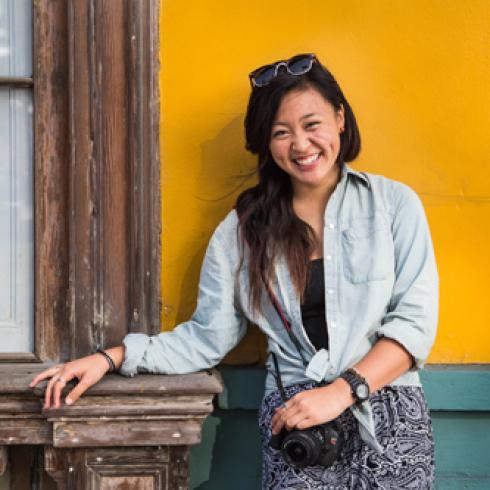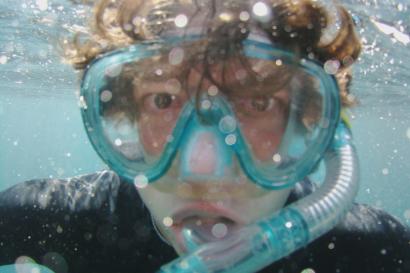Last month, we embarked on an overnight hike between two small towns: Lloa, located at the mouth of active Pichincha volcano, to Mindo, a popular destination for Quiteno tourists located in tropical cloud forest and have about 40 kilometers and 1500m above sea level between them.
The beauty of this country is ever changing, ever impressing, ever astounding, and ever abounding. Though the trek was long, I enjoyed the continuous unfolding of the landscapes, insects, plants, and flowers. Leaves that appeared to be diseased were actually covered in hundreds of iridescent blue beetles. Large, white water rivers were crossed by teetering stones and stumps or by using rusty metal pully and swing contraptions. Hills turned into valleys, valleys turned into rivers, rivers created cliffs, and beyond the cliffs we continued through thick jungle. Our campsite was literally in the clouds, beside the Rio Blanco.
The second morning I was sitting by a small creek on the other side of our campsite, and noted a pale yellow mold covering organic debris in the creek. Brushing my teeth and washing breakfast dishes, it wasn’t until about 10 minutes later that I realized what I was looking at wasn’t mold, but actually hundreds of butterflies, holding so still I thought they were fungus! With a wave of my hand, the little beauties scattered, leaving the stones and stumps they once adorned.
In one jungle section, we entered a small clearing and I felt like I was in a scene from the new Alice in Wonderland–instead of being surrounded by the rich greens of the rest of the jungle, the whole clearing was covered canopy to forest floor in vines with bright orange flowers, buds reminiscent of petunias. I leaned in to look inside one of the trumpet shaped buds and jumped back, startled to find sharp, aggressive teeth like structures inside the flower. Yikes. Will stop to smell the carniverous roses next time…
It was a unique experience to feel the changes in climate, and even more, to see the change in altitude affect plant and animal life. Starting in the Paramo, or high altitude mountain above the tree line (3800 m or so), we hiked into thicker and greener jungle; our surroundings were changing every few hours. As with many things in Ecuador, I have never experienced anything like it. I can’t help but be left in awestruck wonder, and in deep gratitude that I have been afforded to see such things. Though it makes me feel closer to God, though the wild brings me peace, I come back each time a little more lost. Not in the sense that I have no direction, but lost in the mystery, lost in the beauty, and lost in the vastness, and lost in wonder.
That being said, all who wander should at least get a little bit lost…

Kristi Ch
<p><span style="color: rgb(29, 29, 29); font-family: Arial, Verdana, sans-serif; font-size: 12px; line-height: normal; background-color: rgb(237, 237, 237);">I'm studying studio art, entrepreneurship/social enterprise and international studies at Wake Forest University (Go Deacs!). Born and grew up in Canada by Malaysian born parents, I've always had an awareness of other cultures, countries, and customs. I've always wanted to travel South America and after spending the summer interning in Lima and volunteering in Kenya, I am excited to stay in one country for a while and live out some new adventures. I enjoy everything about the outdoors--camping, rock climbing, hiking, biking, running, hammocking, and have recently taken up surfing while in Lima. I also love all things art-design, painting, photography, and film, and hope to be able to share my experiences in Quito through my words and images.</span></p>






